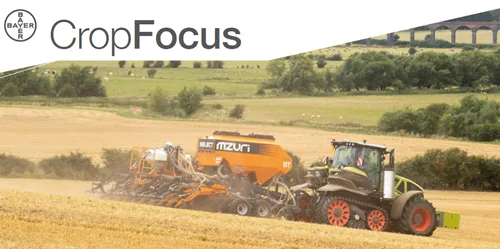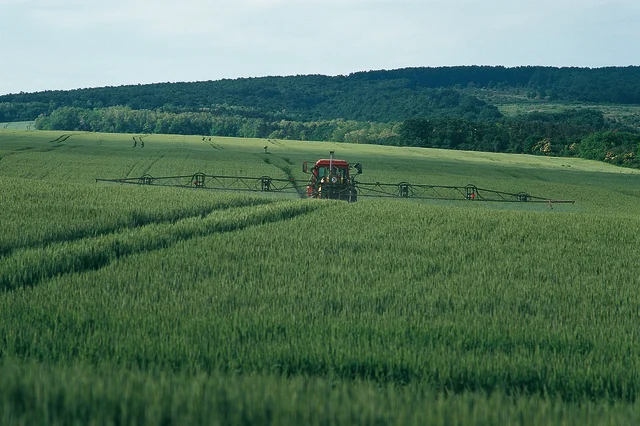Published on 1st February 2023
Weed Management
Knowledge is power when tackling Italian ryegrass

Results from the recent Bayer/ NIAB Italian ryegrass survey confirmed anecdotal reports that the weed is becoming more of a problem.
Italian ryegrass survey confirmed anecdotal reports that the weed is becoming more of a problem
When assessing any new grass-weed threat, it is easy to think of it as ‘the new black-grass’, but Italian ryegrass has distinct characteristics that influence the best control measures. First and foremost, resistance patterns are not as predictable for ryegrass.
“Because of the experience with black-grass, we think resistance appears in a set sequence, starting with ACCase, then ALS, and perhaps onto residual chemistry,” says John Cussans of NIAB.
But, results from resistance testing show a wide range of resistance patterns that are not predictable. Most significantly, resistance to post-emergence herbicides is not as widespread as feared.
Against ryegrass, farmers have two main herbicide options. ALS-inhibitors (HRAC Group 2), products like Pacifica Plus (mesosulfuron + iodosulfuron + amidosulfuron) and Atlantis Star (mesosulfuron + iodosulfuron + thiencarbazone), as well as Axial (pinoxaden) in HRAC Group 1. Nearly two-thirds of samples were susceptible to at least one post-em product as shown in the table below.

“I suspect if you asked people what proportion of ryegrass populations are resistant to ALS you would get a much higher number than we found in the survey,” says Mr Cussans. “It’s not because those people aren’t having problems controlling Italian ryegrass, but the source of the problem is perhaps not what they imagine it is.”
Bayer’s Tom Chillcott says the survey demonstrates how important resistance testing is to ryegrass control. “You cannot make assumptions about resistance and rule out effective chemistry for no reason.”
Cultural controls
The second major difference compared to black-grass is the performance of cultural controls, particularly spring cropping.
“In autumn-sown crops, delaying drilling is very effective in black-grass and works well, if not quite as effective against ryegrass,” says Mr Chillcott.
“In poorly established spring cereals, we see ryegrass causing lots of problems; simply establishing a crop in spring doesn’t guarantee good control. Wait until conditions favour good establishment and rapid development and eliminate any overwintered weeds beforehand with Roundup (glyphosate).”
Agronomists learning to tackle variable resistance patterns
Agrovista agronomist Ian Johnson advises clients in northeast England. Several farmers have ryegrass problems, although some take it more seriously than others. He recognises most ryegrass has some degree of resistance and is becoming more challenging to control.
“The survey was a good opportunity to have samples resistance tested to see what some of the more challenging fields would show. I took samples from a field near Darlington and two fields near Sedgefield.
“The two samples near Sedgefield were from adjacent farms with fields about one mile apart. As you might expect, the resistance results were similar; 51% and 78% susceptible for flufenacet, 0% and 7% susceptible to Atlantis and 84% and 97% susceptible to Axial. The result from Darlington, which is only 6-7 miles south, showed 67% susceptibility to flufenacet, 80% susceptibility to Atlantis and 35% to Axial.
“I wasn’t surprised at the results showing some resistance, but the fields at Sedgefield showing almost total resistance to Atlantis were a surprise, and a shame, as Atlantis-type products still do a good job on bromes, which are also plentiful in this area. The Darlington result showing different resistances is a surprise being quite close to Sedgefield. It is very useful now knowing what works and what doesn’t.”
In the East Midlands, Strawson’s agronomist Ian Holmes, learned valuable information from the five samples he submitted for resistance tests from ‘hotspot’ fields.
“Ryegrass samples all came back with ratings of susceptible to the contact herbicides Atlantis and Axial. This suggests we should still be able to control these populations with a contact herbicide with good application conditions.
“Of greater concern was the activity of flufenacet. For the five samples submitted, the flufenacet controls were rated at 20.8%; 12.5%; 30.4%; 40.7% and 26.8%.
“Both contact and residual results surprised me to some extent. We have generally moved away from applying contact herbicides for grass-weed control due to variable performance, as we felt we were selecting for resistance. It looks as though some performance ‘issues’ have potentially been more related to conditions and timing rather than true resistance.
“The result for flufenacet is more concerning than surprising, given the reliance on this active for grass-weed control over the last 10 –15 years. Although this has always been used alongside other residual chemistry and cultural controls, the over-reliance on this active ingredient looks to be hitting home now.”
His initial plans are to reduce the reliance on flufenacet where ryegrass is an issue. “Although it will remain a key part of our residual herbicide programme, other partner products will need to do some of the heavy lifting.
“I don’t expect to go full speed back into contact SU or DEN chemistry on the back of these results, but will look at targeting those areas that would take most benefit, aiming to apply in good conditions to smaller weeds to give the best chance of achieving control.”
In summer 2021, farmers and agronomists sent nearly 200 ryegrass samples to NIAB in the largest ever weed survey of its kind in the UK. Samples were tested for resistance to several key pre-em and post-em actives alongside a questionnaire which recorded details of
agronomy and attitudes to weed control. Results of the survey were released in 2022, see: cropscience.bayer.co.uk/ryegrasssurvey.
This article is an extract from CropFocus magazine, if you would like to sign up for the next issue please sign up here




